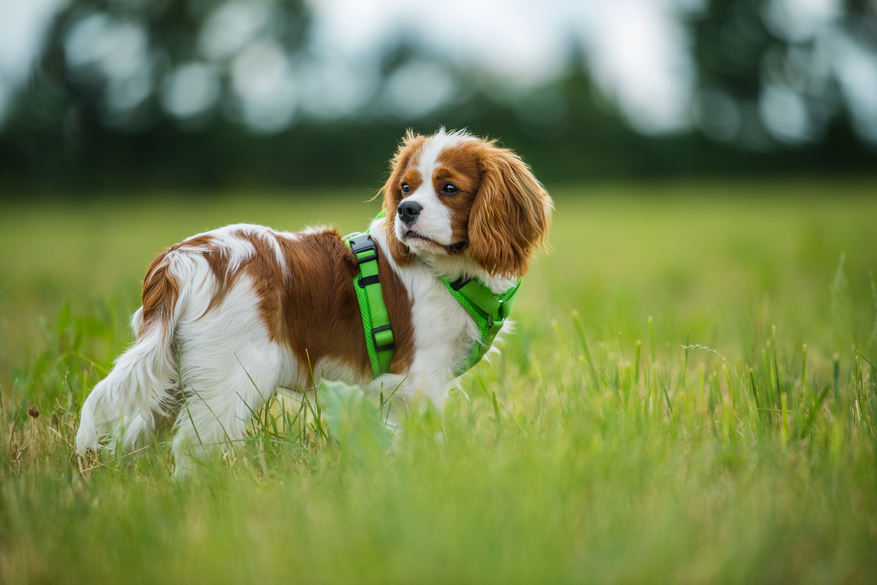There is no shortage of conflicting information when it comes to what to walk your dog in. There are so many different options for dog walking equipment on the market.
It’s no surprise you’re having a hard time figuring out what’s best for your dog! Especially if they don’t seem to be a fan of wearing whatever equipment you’ve chosen so far. My preferred option is to walk a dog in a harness.
Why I recommend walking your dog in a harness
Some say that a harness encourages a dog to pull more. In actual fact, a well-fitted harness used with a training lead is a great option to help manage pulling. It’s important to be aware a harness won’t stop the pulling. The only way to do this is by training your dog to walk on a loose lead.
However, a decent harness does provide you with some support when your dog pulls on the lead. It’s normally also a comfortable option for dogs, avoiding strain to the neck caused by a lead attached to a collar.
Walking your dog in a harness versus headcollar
This compares to headcollars, which are often found to be irritating by dogs. Despite making things more manageable for people, they can negatively impact a dog’s experience when out walking. It’s not uncommon to see dogs wearing headcollars rubbing their nose along the ground in an attempt to get it off. It’s a pretty clear sign they’d prefer not to have it on!
So, walking a dog in a harness is always my preferred option… unless a head collar is necessary for safety reasons. Please note that when I say safety, I mean the risk of pulling you over rather than acting as a muzzle. A head collar doesn’t work as a muzzle!
How to help with pulling on a lead
It’s helpful to teach your dog to walk on a loose lead if you struggle walking them. Also, aim to find some safe and suitable off-lead opportunities to take the pressure off you both. Find out how you can train a reliable recall here.
Dogs naturally have a faster pace than us, so pulling is normal. They usually want to be off exploring with their nose, or maybe chasing that squirrel! But, that’s not to say it doesn’t make walks difficult for the human on the other end of the lead!
Try and ensure any equipment you use is durable and well fitting. Otherwise, it can cause discomfort or may even become unsafe. Think of the discomfort and pain caused by ill-fitting shoes!
Why dogs can dislike wearing a harness
Sometimes, dogs can develop a dislike to wearing a harness. Always speak to your vet in the first instance if your dog develops a dislike of their harness. It could be that your dog wearing a harness aggravates pain or discomfort.
Once discomfort has been ruled out or managed, a good behaviourist can work with you to help your dog learn that wearing a harness is comfortable and nothing to worry about.
Why it’s worth finding the right equipment for your dog…
Always investigate why your dog doesn’t like their harness or other equipment used. There’s usually a reason!
It can make walks much more enjoyable if you’re sorted with suitable, safe and comfortable equipment. There’s lots of options to explore if you’re having trouble.
Follow me on social media:

